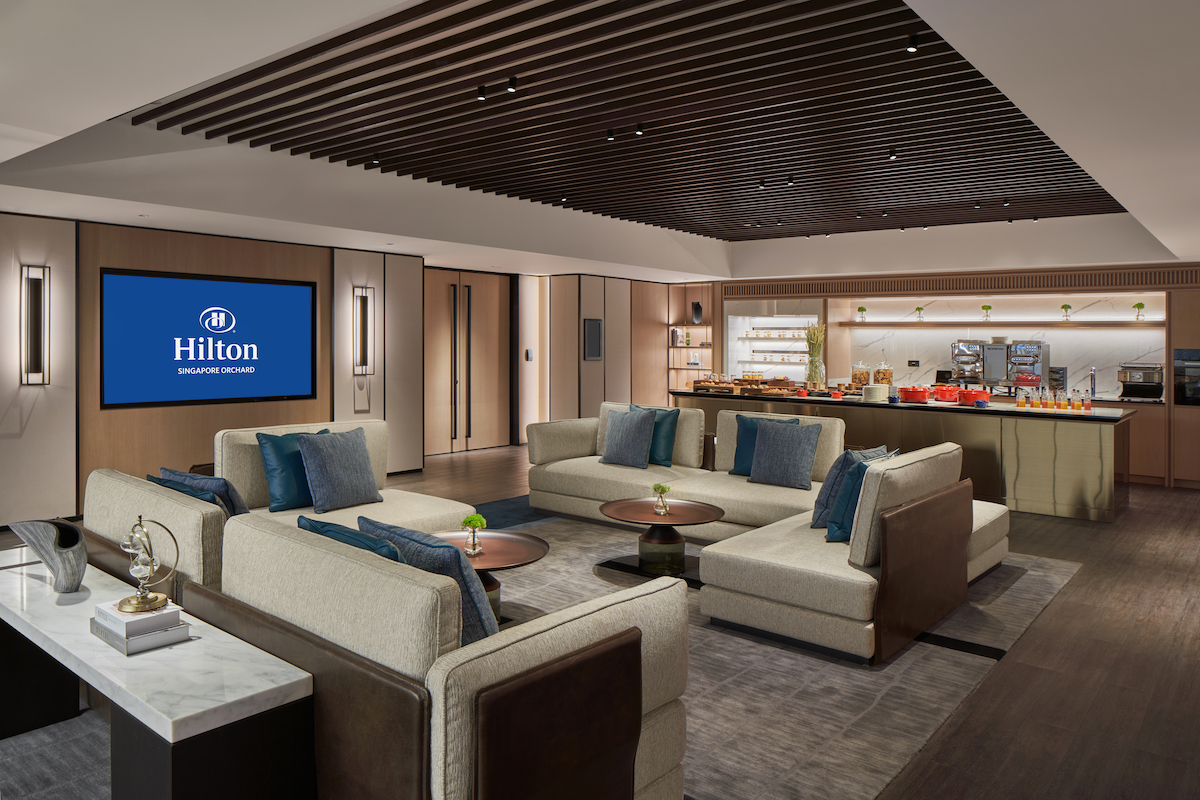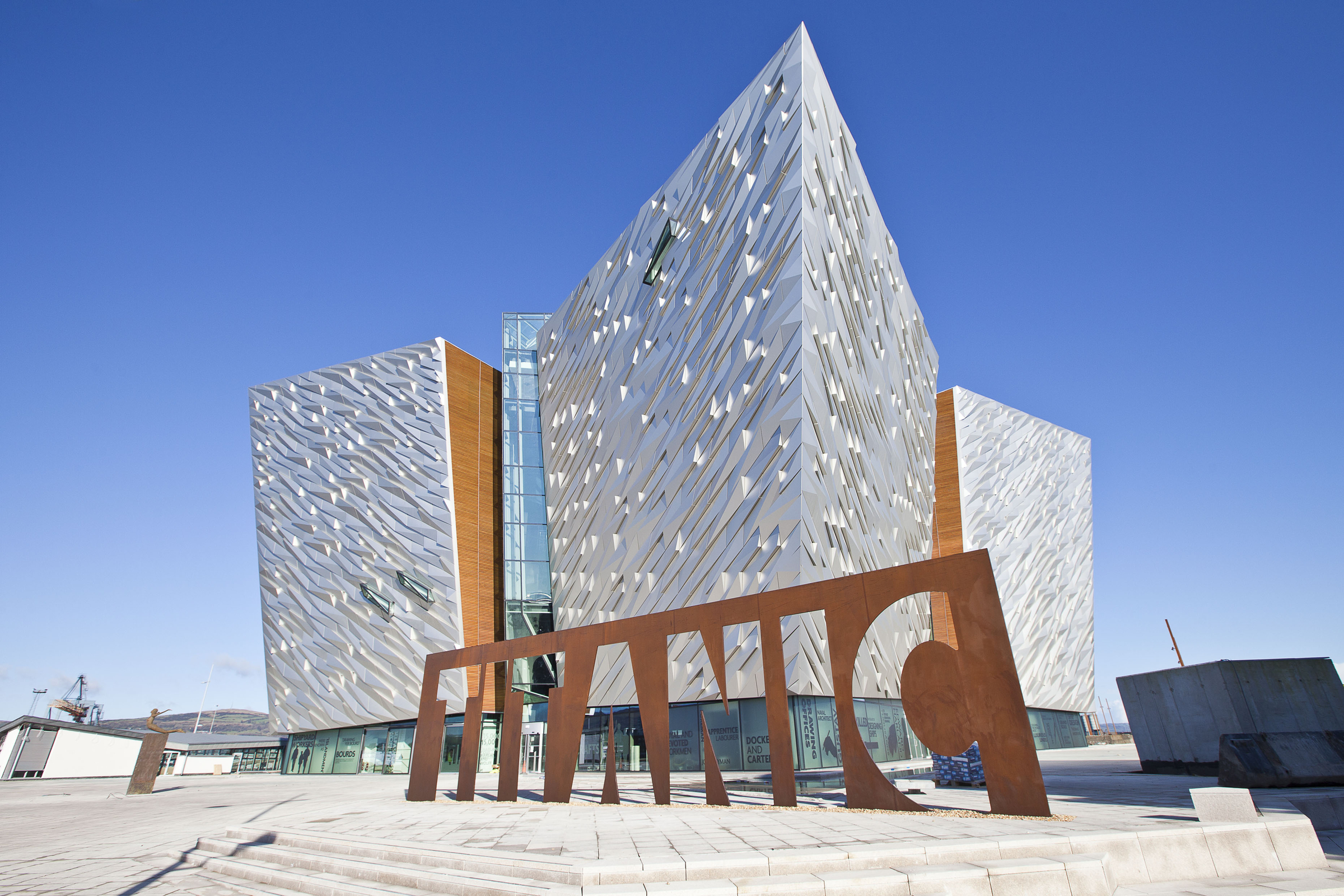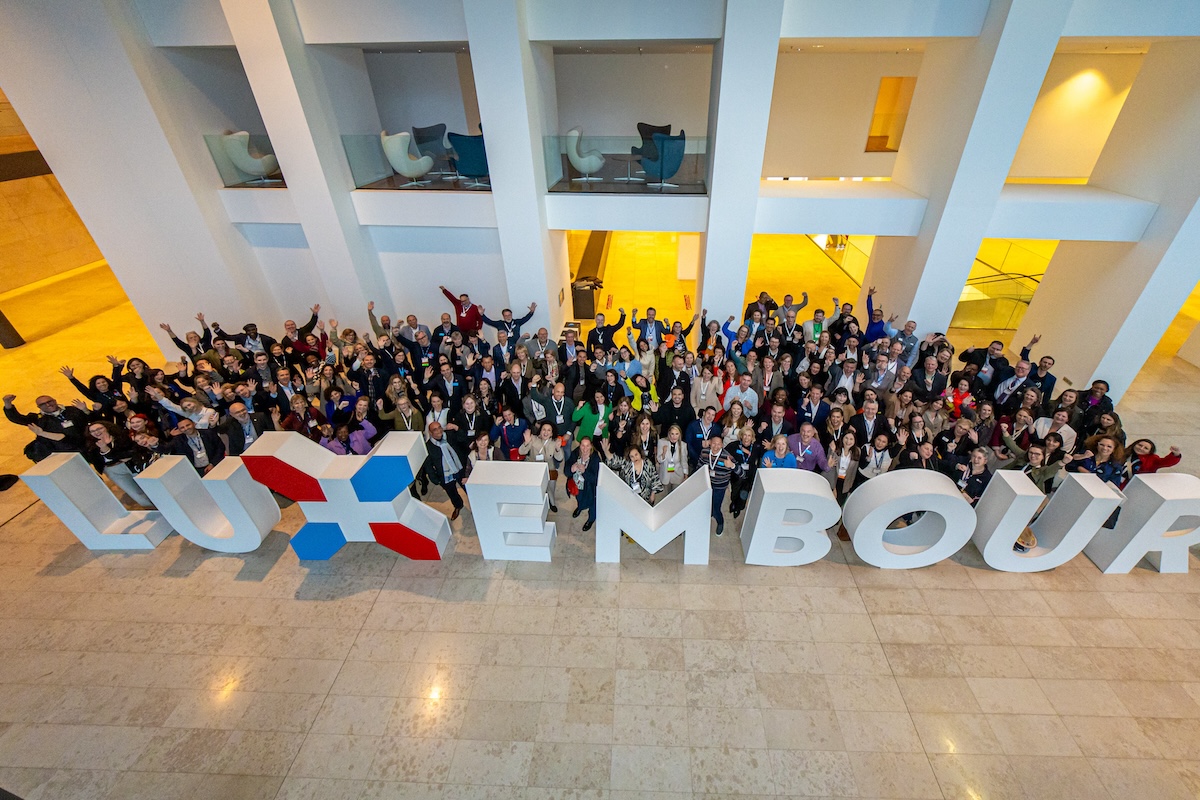Skift Take
Meetings and events now play a pivotal role in reconnecting teams within a supportive, nurturing environment. Every element of meeting design needs to be carefully considered with delegate welfare in mind. That's why selecting the right venue or partner is the first step to addressing attendees’ holistic wellness needs.
The workplace has changed dramatically over the last two years. As employers increasingly shift away from centralized offices, there are fewer opportunities to work and connect in shared spaces. To build and strengthen strong interpersonal relationships, it’s now vital to incorporate intentional moments of connection in professional settings. Meeting planners play a key role in ensuring that business professionals have the support they need not only to adapt in this new environment — but also to thrive.
Planners today need to consider the full spectrum of delegate welfare. That means taking a holistic view of every element that contributes to attendee wellbeing — from the design and environment of the venue to the agenda rhythm and content, incorporating movement, healthful food and beverage, and more.
In this article, four Hilton experts share their top tips on how to work with venues to provide delegates with an onsite experience that will leave them feeling refreshed, motivated, and connected to their colleagues.
Look for Uniquely Designed Meeting Venues to Inspire Collaboration
When it comes to the next generation of meetings, it’s time to think beyond the elements of a basic meeting room. Innovative meeting spaces can be the ideal antidote to the stale, boxed-in computer screens that we’re all used to staring at. Forward-thinking partners, like Hilton, are planning for the needs of their customers today — and in the future — and have solutions in place.
“We’ve designed a series of different-sized meeting venues that are geared towards innovation and think-tank sessions,” says Larry Traxler, senior vice president, global head architecture & design, Hilton. This new design has already been implemented at multiple Hilton properties around the world, including Hilton Austin, Hilton Columbus Convention Center, Hilton Diagonal Mar Barcelona, and Hotel del Coronado, Curio Collection by Hilton.
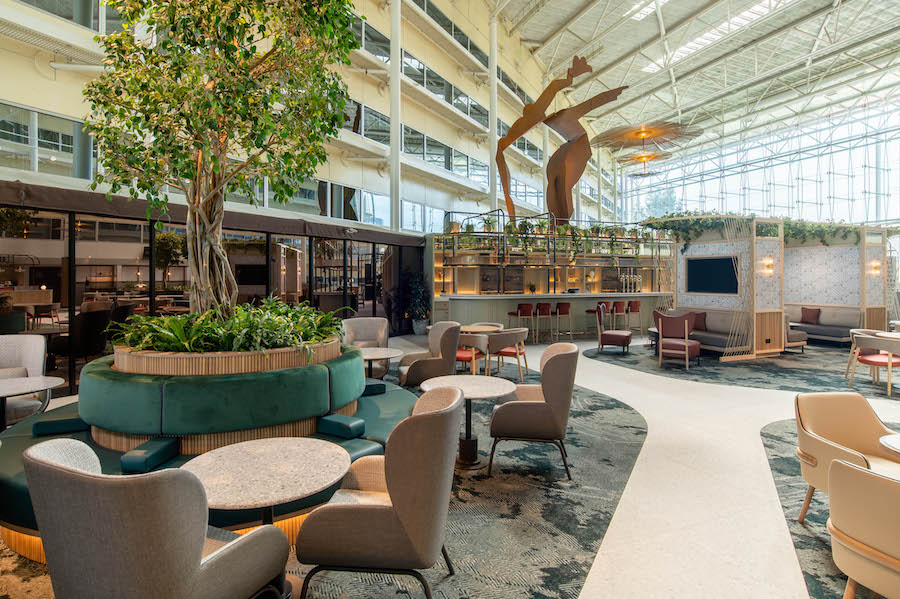

One of Hotel del Coronado’s most popular spaces is a historical industrial structure that’s been renovated into a campus-like space for meeting, coworking, and bonding. The rec-room-inspired area is used for smaller breakout sessions and offers a refrigerator, games, and comfortable seating.
“It’s important to consider the layout of the rooms we use as gathering places,” said Danielle Boyles, commercial director for Hotel del Coronado. “What space are we providing that allows the free flow of conversation and open dialogue for creative thought generation? That’s what planners are really excited about.”
Accommodating different group sizes, many of Hilton’s newly developed spaces are similar to “a traditional pre-function area,” designed for breakouts with individual seating areas all leading into a beverage area that acts as a central anchor. “They are almost like little lobbies within our hotels,” explains Traxler. “They can inspire ingenuity in a way that is completely different from five years ago.”
According to Traxler, it’s all about “user-centric design,” whether it’s a matter of dividing larger spaces into a series of smaller breakout zones designed for connection or redesigning the layout of individual rooms. This means incorporating a variety of seating styles, different screens, and even thematic color schemes. It also means that shoulder-to-shoulder seating is no longer the norm. More space is combined with more intimate layouts.
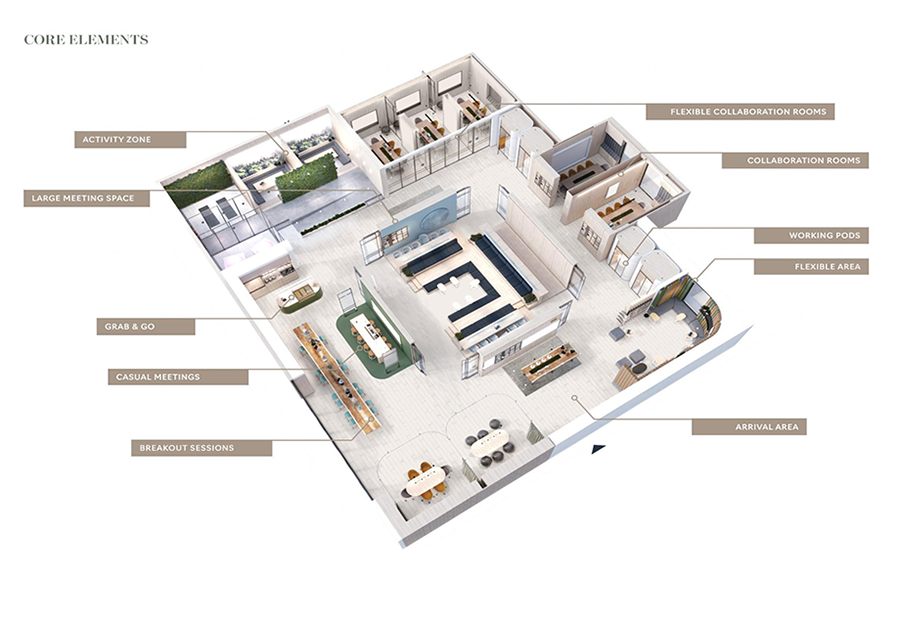

Bringing the Outdoors, Inside and Making It More Accessible for Meetings
Access to the outdoors is another key factor in addressing attendee wellness, as is greater flexibility in general. What kinds of architectural features should planners be looking out for if they want to help their attendees step outside? Hilton has introduced large sliding glass partitions and mechanical garage doors to encourage the organic flow of traffic between indoor and outdoor spaces.
Rooftop dining areas are another great way to let your attendees enjoy some fresh air alongside great views, with Hilton renovating multiple properties for this purpose.
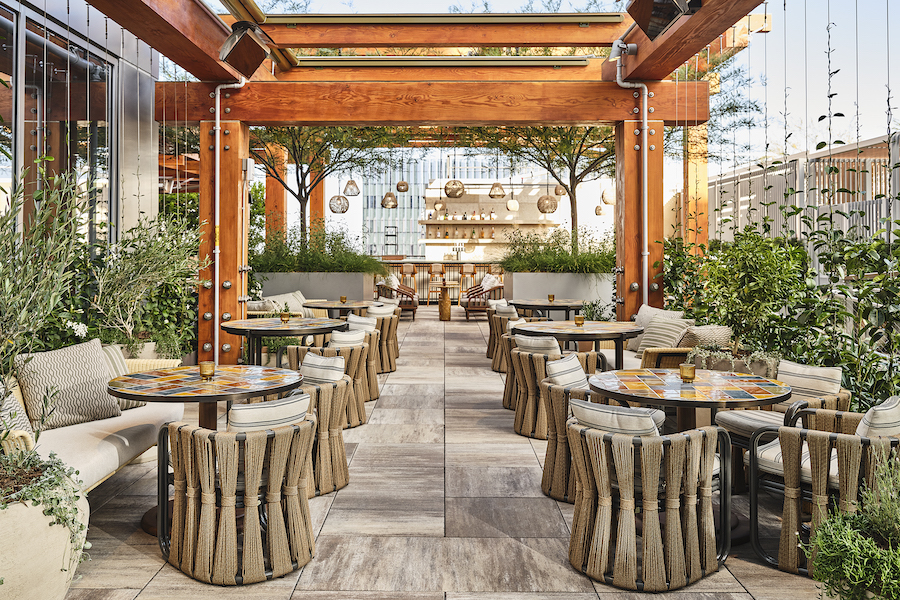

Lawns can similarly be a refreshing setting for all kinds of meetings and events — and even fitness classes — provided the right set up is in place. Based on his experience helping to design outdoor spaces at Hilton’s All-Inclusive resorts, Traxler recommends asking whether the lawn will be equipped with a built-in power supply and audio equipment.
Break the Mold on “One-Size-Fits-All” Seating Plans
It’s well-known that seating plans play a pivotal role in successful meeting design, but it’s now no longer about choosing between a classroom style vs. seating in the round. It’s about creating multiple seating styles within one larger, cohesive meeting space.
“Be creative with seating arrangements and offer a variety of options to meet different needs,” recommends Kelly Knowlen, vice president, sales engagement and special events for Hilton Worldwide Sales. Knowlen oversees both customer and industry events as well as internal Hilton conferences, so she has her finger on the pulse of the latest innovations in meetings and events.
The trend, she says, is towards greater choice, personalization, and opportunities for connection — and chair layouts are a key piece to this puzzle. Gone are the days where all seats faced the stage or the presenter. Knowlen and her team have been designing small clusters of seating behind the main audience. This gives attendees the chance to form spontaneous (or scheduled) informal breakout discussions between general sessions, in this way maximizing their opportunity for peer-to-peer connection.
Even within the stage-facing audience section, there’s room to think more deeply about the attendee experience. For example, seating arrangements don’t have to mean that everyone is actually seated. Extending the standing desk model to the conference room, Knowlen recommends adding stools with high top tables and other furniture styles that allow attendees to lean or stand, rather than sit. This is not just a matter of preference, but inclusivity — sitting for extended periods can aggravate some health conditions.
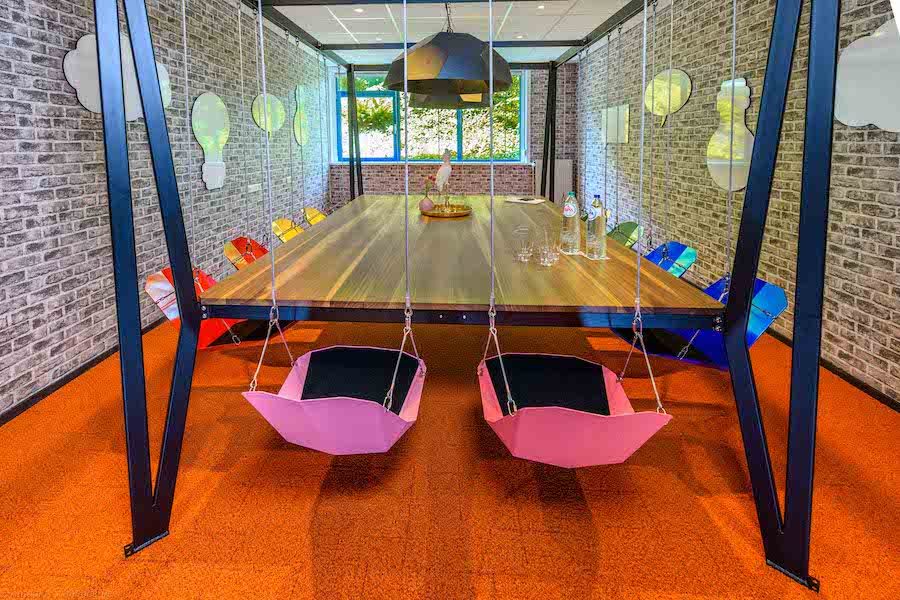

This kind of intentional design can also help to facilitate connection by taking different attendee needs into consideration. “Some might need quiet spaces that still have a community feel right around the perimeter of the main seating,” says Traxler. “This can be vital for those who aren’t ready to dive back into a big group setting yet — but who also don’t want to sit in their room watching a meeting on a screen.”
Build Wellness Into the Agenda and the Venue Space
With an increased focus on personal health routines over the past two years, many people are returning to travel and events with a refreshed definition of what wellness means in their lives. Today, there is a growing movement to incorporate opportunities to infuse wellness into the professional sphere, no less at meetings and events.
Cater to Individual Needs by Focusing on Holistic Wellness
As with the design of meeting spaces themselves, a user-centric approach to wellness means offering different options to meet unique needs. According to Hilton’s latest trend report, one-third of global travelers plan to prioritize their physical wellbeing while traveling in 2023. More specifically, over a quarter (26%) are looking for access to fitness centers and activities. Addressing this need, Hilton partnered with Peloton to bring Peloton Bikes to nearly all of their 5,400 U.S. hotels.
“At Hilton, we understand that the pandemic changed the way people define wellness — and that’s accelerated the need to innovate quickly to meet travelers where they are at in their personal wellness journey,” says Amanda Al-Masri, vice president of wellness at Hilton. “This cultural shift has been the underlying catalyst for our wellness innovations — from the partners we select to the on-property experiences offered.”
For group activities, Knowlen suggests a similar spirit of inclusivity by offering multiple breakout options and alternate routines to meet differing needs. Including some healthful snack options can be another way to ensure everyone is excited by the refreshment table. The Hilton menu encompasses a wide variety of choices, so you can fulfill nutrition preferences while also heeding dietary preferences.
Consider adding spa-like perks to your meeting or event. This could be as simple as providing attendees with access to on-site wellness facilities or programming spa services as part of planned relaxation activities. Knowlen notes that Hilton has had excellent success offering massage stations at several of its events. And rather than scheduling them into the agenda, it was most successful when it was offered as a walk-up, open-ended offering at breaks for those interested, rather than something more formal.
This new emphasis on wellness goes beyond fitness centers and spa offerings, also addressing the entire mind-body connection. Workout options should be balanced with access to activities and spaces that nurture mental health and give attendees the chance to decompress. For those who want to combine a group activity with the health benefits of meditation, consider providing guided mindfulness sessions during breaks.
Increasingly, hitting the right balance ultimately means building more free time into the schedule. “More and more planners are building white space into their agendas: time for focusing on wellbeing and a sense of meaning and connection,” says Boyles. She adds that the Hotel del Coronado has an entire programming department to help ensure that you provide attendees with the support they need to make the most of that free time. “We’re trying to set the stage and then let the planner come in and create that magic together with our programming team.”
Accommodate Flexible Work Schedules with Flexible Spaces
It’s important to consider and respect delegates’ time and holistic wellness when building out the flow of the agenda but also when selecting the space. Hybrid work has offered greater flexibility not only in terms of being able to work outdoors when preferred, but also in terms of being able to attend to personal matters or day-to-day work duties.
Knowlen acknowledged that many delegates are also looking for semi-private spaces where they can get work done during breaks or before or after the meeting. The “work from anywhere” model means that work doesn’t stop on the road. To meet the needs of their customers, Knowlen shared that Hilton provided workspaces for clients at a recent corporate event, which was met with resounding positive feedback.
Al-Masri similarly notes that some Hilton properties — like the new Tempo by Hilton in Times Square — are now including a “Get Ready Zone” inside hotel rooms. These multi-purpose spaces are designed with the needs of remote workers in mind.
Embrace a “Give Back” Model for Wellness Experiences
Collaborative meeting spaces, opportunities for exercise, outdoor venues, and flex spaces: What more can a planner offer to ensure optimal delegate welfare? A truly holistic model should allow space for duty of care — both for others and for ourselves.
Incorporate CSR and Educational Elements
As Skift Meetings’ 2023 trend report points out, attendees are now looking for a more authentic connection to the destinations they visit. And one of the best ways to deliver this kind of community spirit is through CSR activities. It’s even been shown that this kind of altruism contributes to wellness by lowering the risk of anxiety and a host of other medical issues.
To meet this need, Hotel del Coronado created a catalog of “give back” activities. “We try to build in activities that educate and really celebrate the destination — and give back to the community at the same time,” says Boyles. “Those are the ones that have been the most successful.” These include making care packages for those in need as well as beach clean ups.
Another effective strategy can be to incorporate educational elements, especially those with a family-friendly focus. For attendees reserving their travel to destinations where they might want to tack on a few extra days of stay, this kind of attraction can be a game changer. The Hotel del Coronado has had particular success with its Ocean Explorers program, developed in partnership with the Scripps Institute of Oceanography. This initiative helps educate kids on the local wildlife while also supporting conservation efforts.
Increasingly, attending to delegate wellness means thinking about every aspect of their personal welfare — whether it be professional needs, a personal or family matter, or mental and physical health.
To learn more about how Hilton is redefining the meaning of attendee wellness, visit the company website.
This content was created collaboratively by Hilton and Skift’s branded content studio, SkiftX.

